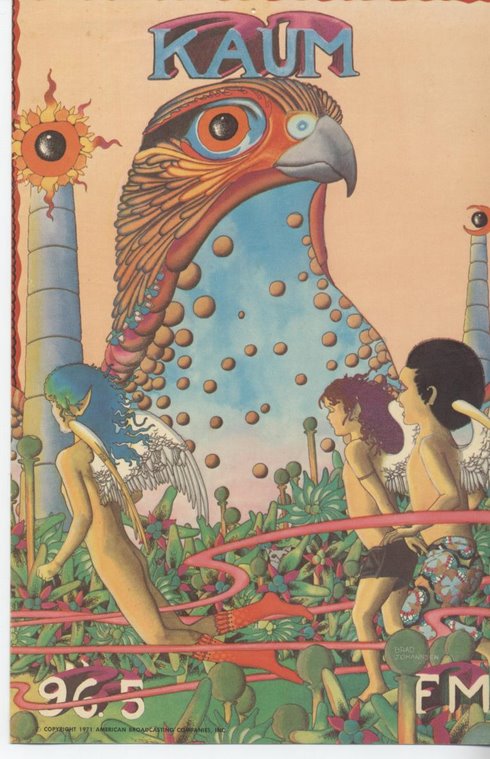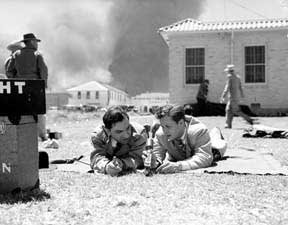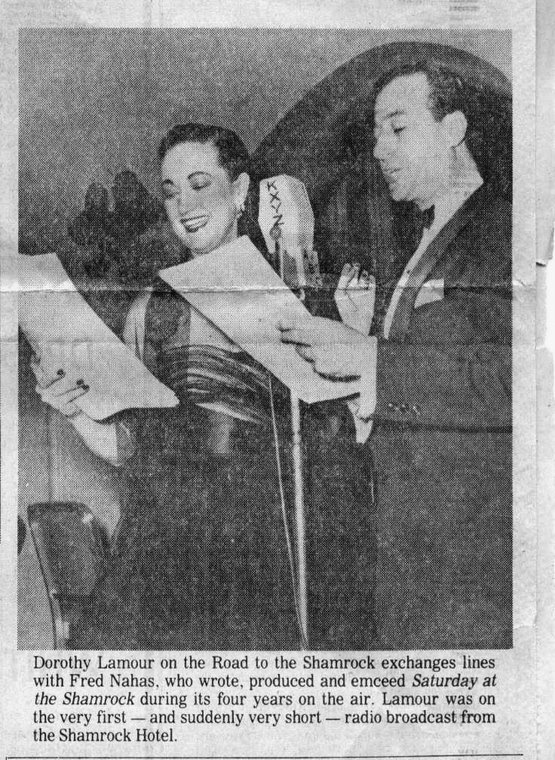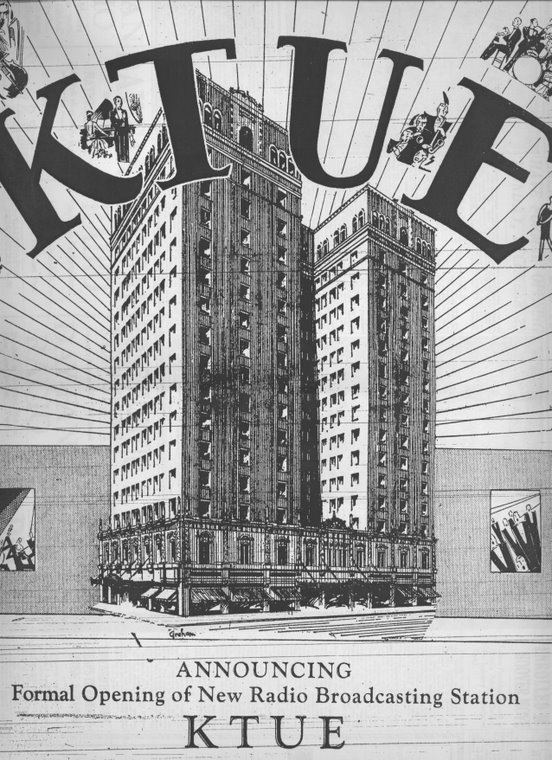The 1930s - Part 3 - A Shared Antenna
In March of 1935 KXYZ signed up as an affiliate of the World Broadcasting System. Not much is known about this short lived ‘network’ but apparently the programming supplied was on electrical transcriptions (disks like long playing albums) and there was no interconnection. The station also upped power to 500 watts and moved into new facilities in the Gulf Building from the Texas State Hotel; they were to occupy those studios for 3 decades. Newspaper listings indicated there were many interludes of ‘Popular Music’ filling gaps in the program schedule.
Sometime in 1935 Gerald Chinski, who had been the chief operator of WEAY in the 20s, became the Chief Engineer of KYYZ, a post he was to hold until 1961.
Late that year KTRH and KPRC spent $250,000 on a new transmitting plant to be shared by the both of them at Deepwater on the La Porte Highway where KTRH had been located since going on the air; KPRC was to move from its Sugar Land location. The expenses included nearly $100,000 for 2 brand new 5000 watt RCA transmitters as well as a new type of antenna. There was also 16,000 feet of lead wire and 13 and a half miles of copper wire. None of the old equipment at either site would be used.
The antenna was a 375' tower mounted on a triangular base. Called the tallest in the southwest, it was almost as tall as the Gulf Building, Houston’s tallest skyscraper. It would replace the old style flat top antenna system and both stations would operate from the same antenna, something that had only been done by two other stations up until then, in Massachusetts.
The old flat top antennas, with the actual antenna slung between two towers something like a curtain rod, had produced an oblong pattern of coverage; it was estimated the new antenna would improve the coverage area of both stations by 75-125%. The new transmitters were to be ‘automatic’ also, not requiring constant attention by engineers to keep them operating and they would re-start themselves if knocked off the air. The grounding system - the extensive wire grid laid in the ground - was supposed to eliminate fading, a frequent problem with radio broadcasts.
Test broadcasts started on the 4th of January, 1936. A big open house was planned on Sunday the 12th; KPRC switched over to the new transmitter sometime on Thursday afternoon and by the 12th the papers reported the station had received hundreds of calls complimenting the stronger signal. Just when KTRH switched over was never mentioned. Hundreds, perhaps thousands, attended the open house, which was to be in effect ‘whenever the stations are on the air.’ The door to the transmitter building was not to be locked; passersby could just ‘walk right in.’
Deepwater was a small town that has since been absorbed by Pasadena. The present KXYZ transmitter on Texas 225, just west of Beltway 8, is on the original KTRH site and that location was also used by KRCT/KIKK 650am.
Though he was not involved in ownership after his problems with XED, Will Horwitz continued his involvement in broadcasting. He sponsored the Will Horwitz Amateur Hour on KXYZ, broadcast live from his Texan Theater. Once he staged a ‘Juneteenth Jubilee’ featuring all Black performers and installed a special bank of 30 phones to take calls from listeners to determine a winner.
Frank Tilton, the blind pianist, had a daily 15 minute program on KTRH, sponsored, ironically, by an optical company. Mrs. John Wesley Graham also had a regular program on KTRH and KXYZ.
In January of 1936 Horwitz installed an electric organ in his Uptown Avenue amusement center connected to his Uptown Theater. With typical flair he had dubbed it the ‘Radio Mystery Organ.’ Sounds were generated by radio tubes rather than pipes and the organist gave daily concerts.
Though no new stations made it on the air during the decade there were at least two applications. In February of 1936, Bayou Broadcasting applied to the FCC for a station. The principals were James W. Rockwell, a lumberman, Charles Reinhard, an attorney, and R.A. Talbot of Bankers Mortgage Co. In January, 1937, there were news reports on a hearing being held by the FCC on an application by Reverend Williams States Jacobs for a Houston station. Jacobs had apparently operated an unlicensed station from his ranch at Webster and that was complicating matters. Other than the fact neither of these stations ever made it on the air, it is not known what happened to the applications.










No comments:
Post a Comment